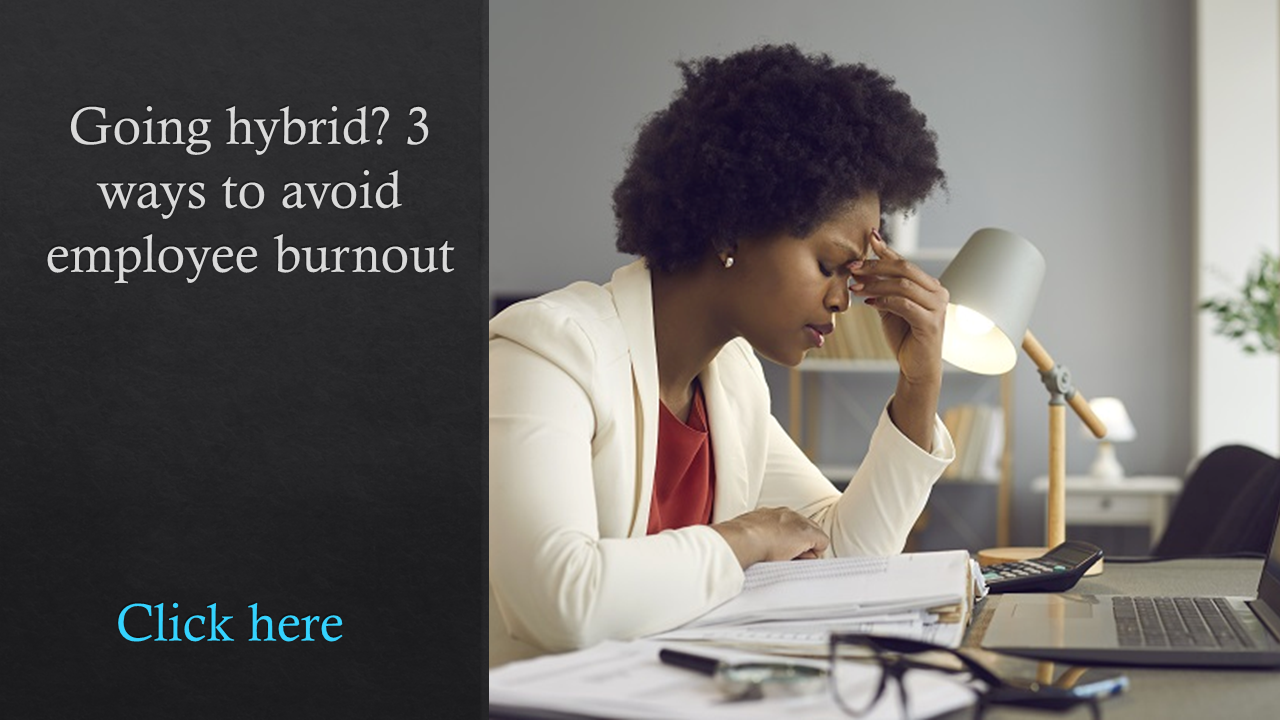Even as concerns over the Delta COVID variant continue to rise, many organizations are confident the worst of the pandemic is behind us and are rapidly planning for the long-awaited “return to work.” While some CEOs are expecting that to mean a return to the traditional office setting, it’s becoming increasingly obvious that many companies are going to be adapting to a “more flexible, forgiving work environment,” according to a new report by the Josh Bersin Academy.
“CEOs and their very top executive teams are accustomed to having face-to-face interactions with people, so their expectation is that the recovery from the pandemic will be a big reentry into the offices,” says Josh Bersin, founder and dean of the Josh Bersin Academy and a keynoter at the upcoming HR Technology Conference who will explore the future of hybrid work in a free webinar on July 21. “Employees are saying, ‘Wait a minute, I was very productive during the last year-and-a-half and I’d like to keep doing what I’m doing,’ so there’s a bit of a tug of war going on.”
Once considered code for “not working,” Bersin says, the pandemic broke the stigma of working from home and taught employers that it can work. As the job market grows more competitive, employers are having to reevaluate their attitude toward remote work. Already, points out Bersin, the second-most-common “location” for job postings on LinkedIn is “remote.”
Yet, not all organizations are sold on the idea of an entirely remote workforce. Consequently, many are looking to a hybrid work environment where employees work in the office on certain days and remotely on others. In the Hybrid Work Playbook, researchers write that there’s no clear model for this new world of hybrid work. However, simply “repurposing legacy policies on remote work” is unlikely to be sufficient.
“Before the pandemic, remote work or work-at-home days were considered a bit of a joke,” says Bersin. “Now, it’s much more mainstream. We’ve learned a lot of good things about remote work during the pandemic and, as companies look to shift to a hybrid work environment, they should look upon it as a future-forward design opportunity, not a return-to-work exercise.”

As HR leaders seek to formulate their company’s hybrid work strategies, Bersin recommends they operate in cross-functional teams, bringing in senior leaders, IT, facilities, safety, legal and management. They should also involve employees in the design and implementation. After all, he says, they are the customer of hybrid work.
McLean, Va.-based Mars Inc. established a team focused solely on the future of work. According to Nuno Gonçalves, global head of strategic capabilities building, the team has been “listening and interviewing and conducting focus groups and surveys to understand where we are collectively and to co-create this future.” Because the global food and pet care company operates in approximately 50 countries, the timing of its transition to a hybrid work environment is going to vary based on vaccination rates in each location, according to Gonçalves. In Portugal, for example, where he lives, just 20% of the population had been vaccinated as of mid-June. With vaccination rates in Spain having recently topped 50%, Gonçalves will soon be traveling to Barcelona to meet his boss for the first time. By September, the company hopes to officially begin operating under a hybrid work arrangement.
See also: Bersin-8 factors to remember when creating a hybrid plan
 “We are encouraging somewhere around a 50/50 presence in the office/remote, but we are also providing guidance on what type of work is better done face-to-face and what type of work is better done remotely,” says Gonçalves. “We are going to be continuously monitoring our performance as a company and listening to our associates to determine if this is the right strategy or not.”
“We are encouraging somewhere around a 50/50 presence in the office/remote, but we are also providing guidance on what type of work is better done face-to-face and what type of work is better done remotely,” says Gonçalves. “We are going to be continuously monitoring our performance as a company and listening to our associates to determine if this is the right strategy or not.”
The ability to experiment, learn what works and continuously improve will be crucial for success, says Bersin. Companies can’t afford to get stuck in “an endless pursuit of perfection,” he says. “Instead, we must adopt agile techniques, such as co-creation, rapid deployment of flexible solutions and sensing and responding quickly to change.”
Software company Autodesk plans to measure the success of its new Flexible Workplace Program with 30-, 60- and 90-day assessments, along with soliciting extensive employee feedback.
“This is a multi-year journey and we will continue to test, learn and iterate along the way,” says Terry VanQuickenborne, global head of L&OD.

Autodesk’s FWP divided the workforce into three groups: office-based, hybrid and home-based. The organization designed the program using its Culture Code–which defines shared values, behaviors and ways of working–as the foundation and later built a set of “FWP Promises,” says VanQuickenborne.
“Our promise to our people is multifaceted: to foster an inclusive distributed experience for all, to use our existing company culture as a beacon for future digital and in-person collaboration, and–most importantly–to continue prioritizing the health and wellbeing of our global community,” she says.
The majority of the workforce will be hybrid and, as they shift away from a fully remote arrangement–which, she says, leveled the playing field among the entire workforce–it’s been important to prioritize their psychological safety, VanQuickenborne says. The company is paying particular attention in this area to underrepresented populations.
“We are emphasizing the importance of building trust and ensuring we continue to build a culture of belonging by providing manager and employees resources focused specifically this,” she says, noting Autodesk is also reexamining its talent processes to mitigate for risks surrounding potential hybrid and remote work bias.
The organization will also carry over some successful programs it launched to support remote workers. For instance, over the past year-and-a-half Autodesk reconfigured onboarding for new employees–of which it has hired 3,000 since the start of the pandemic–created webinars for managers focused on belonging and inclusion and debuted “COVID-conscious” workspaces. Its new office in downtown San Francisco offers four floors of flexible workspace that VanQuickenborne says are meant to “create a sense of community and collaboration and whose design was shaped by employee feedback.”
Employee feedback has been integral throughout the design of the FWP, she adds. The organization has conducted surveys, listening circles and focus groups and, as the program is rolled out office-by-office, all employees have access to toolkits, which include models for determining individual and team arrangements, to support the transition.
“As we move into the ‘next normal,’ we will leverage the best of what we’ve learned” since the pandemic started, VanQuickenborne says, and continue to explore new solutions “to ensure that we are meetings the needs of our employees along with the needs of the business.”
While Bersin concedes that the world of hybrid work feels uncertain, he points out that HR executives are in a far better place as they plan the transition to a hybrid work model than they were at the beginning of the pandemic when they had to pivot on a dime to a largely remote workforce.
 “During the pandemic, most companies went remote through a very rapid design process in which they didn’t have a lot of choice,” says Bersin. “HR people now have the opportunity to very purposefully design what the hybrid work experience is going to be like, soliciting feedback along the way–so the company lands in a spot where everyone feels comfortable.”
“During the pandemic, most companies went remote through a very rapid design process in which they didn’t have a lot of choice,” says Bersin. “HR people now have the opportunity to very purposefully design what the hybrid work experience is going to be like, soliciting feedback along the way–so the company lands in a spot where everyone feels comfortable.”
Click here to watch HRE’s free webinar with Josh Bersin: Hybrid Work-Planning for What Comes Next.





